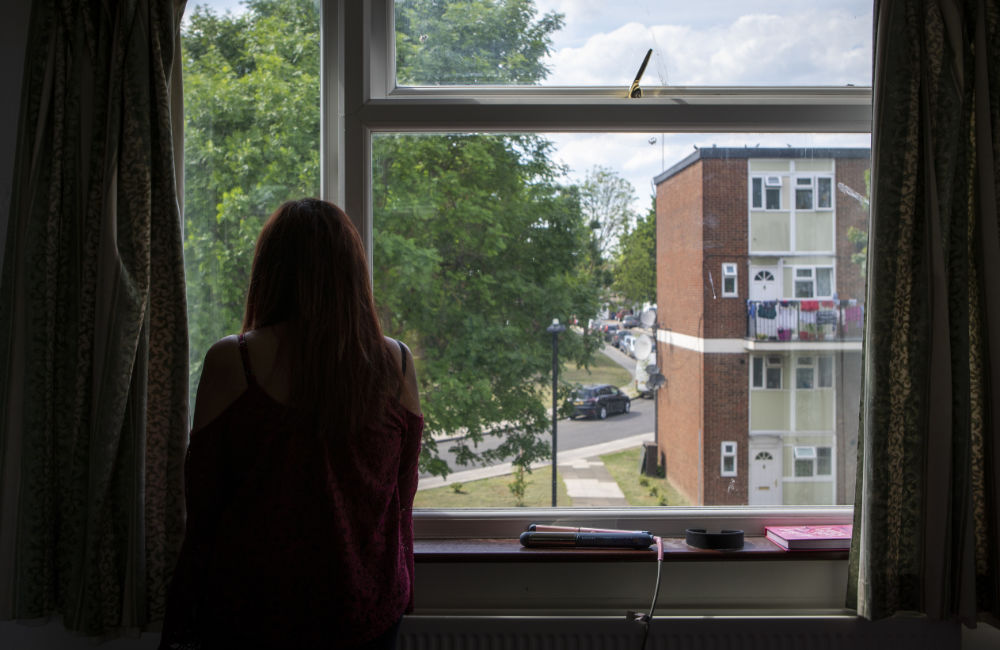Research Steering Group member, Rebecca*, tells us how a social home saved her family from the trauma of temporary accommodation
*Not their real name
As I write this, I am sitting in my cosy living room with a warm cup of tea, feeling generally content and grateful for my life. My son and I are safe, healthy and happy. He is doing well at school, building friendships, and his confidence shines brighter every day. I have a steady stream of work coming in and am studying for my Psychology degree. Of course, like many, I feel the brunt of national and global issues we face, but overall, life is good.
But this time four years ago, it was a completely different story. My life was scary, chaotic and traumatic. That’s because me and my son, who was a baby at the time, were homeless and had been living in temporary accommodation for nearly three years.
Temporary accommodation is failing people
New ground-breaking Shelter research released today shows that temporary accommodation, provided to homeless households by the council, is trapping people in Dickensian conditions.
The research provides indisputable evidence that temporary accommodation is harming people’s health, severing support networks and keeping people stuck in a life of poverty – just as it did for me and my son.
And we aren’t alone. In fact, right now nearly 100,000 households in England are homeless and living in temporary accommodation. 1 This includes over 125,000 children – that’s more than 1 in every 100 children in the country. 2
The research is the biggest ever survey of people in temporary accommodation. 3 I’m proud that myself and other ‘experts by experience’ shaped the research and its findings as Steering Group members on the project.
Life in temporary accommodation is unbearable
While I was embracing the magic of being a new mum and getting to know my beautiful baby, I also had hanging over me personal events that happened in the lead up to us being homeless, and the uncertainty of where we would end up, and when.
We had no stability. I was placed in three different accommodations, and two were outside my local area. Shelter’s research found that more than a quarter of households (27%) were moved into temporary accommodation that’s more than an hour away from where they used to live. Leaving you far away from the friends and family you rely on for support.
The quality of the accommodation was shocking. We had mould growing and a serious lack of ventilation. Three in four (75%) households likewise report poor conditions. One in five (21%) live in accommodation with a safety hazard.
Space was extremely tight. Everything was in one self-contained unit – the bathroom, the kitchenette, the sleeping area – all within one room. I purchased a single airbed for myself which I blew up every evening and let down every morning, just so my son had space to play. This continued for 8 months.
Having a new baby, being alone and in an unfamiliar area, and witnessing regular police visits, violence and drug use in the accommodation, all left me feeling scared and unsafe – as it did for three in ten (29%) survey respondents.
Physically, financially and socially, our time in temporary accommodation was tough, but the emotional aspect is by far where it hit the hardest and took the longest time to recover. I remember waking up every day feeling I had no control over my life, desperately trying to mask my anxiety from my child.
I became just a number on a never-ending waiting list. Powerless to the overarching sense that ‘you get what you’re given’. The whole process is intrusive, dehumanising and unsupportive.
Our social home gave us foundations to heal from
There is no way that my son and I would have been able to progress the way we have without finally escaping temporary accommodation four years ago. A social home has given us space to heal and grow; establish friendships, feel safe, and a sense of belonging in our community. We have been able to focus on and achieve goals, and our wellbeing has skyrocketed.
It breaks my heart that a quarter of a million people are still stuck in temporary accommodation. And have little hope of moving into a settled home of their own due to the failure of successive governments to build enough social housing.
Our research is clear: temporary accommodation is not the solution to homelessness. Instead people need a suitable, permanent home.
The government must act now
Shelter is calling on the government to:
- Invest in a new generation of permanent social housing, by committing to fund the delivery of 90,000 homes per year, a significant proportion of which should be allocated to people in temporary accommodation.
- Make housing benefit adequate, so that homelessness can be prevented and relieved via a suitable and affordable rental, so reducing the numbers in temporary accommodation. This includes urgently restoring Local Housing Allowance to cover the bottom third (30th percentile) of local markets, where government policy says it should be.
Read the full report: Still Living in Limbo: why the use of temporary accommodation must end.
1 DLUHC, Tables on homelessness, Statutory homelessness live tables, Table TA1
2 DLUHC, Tables on homelessness, Statutory homelessness live tables, Table TA1
3 The survey had 1,112 respondents who live in temporary accommodation across six local authorities across England. Our results are broadly representative of households in temporary accommodation.

